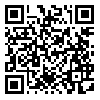Volume 30, Issue 191 (12-2020)
J Mazandaran Univ Med Sci 2020, 30(191): 109-114 |
Back to browse issues page
Download citation:
BibTeX | RIS | EndNote | Medlars | ProCite | Reference Manager | RefWorks
Send citation to:



BibTeX | RIS | EndNote | Medlars | ProCite | Reference Manager | RefWorks
Send citation to:
Ebrahimi F, Azadbakht M, Akbari F, Davoodi A, Godarzi S, Azadbakht M. Qualitative and Quantitative Study of Pyrrolizidine Alkaloids in Medicinal Plants Sold in Herb Shops. J Mazandaran Univ Med Sci 2020; 30 (191) :109-114
URL: http://jmums.mazums.ac.ir/article-1-14864-en.html
URL: http://jmums.mazums.ac.ir/article-1-14864-en.html
Qualitative and Quantitative Study of Pyrrolizidine Alkaloids in Medicinal Plants Sold in Herb Shops
Fatemeh Ebrahimi 

 , Mohammad Azadbakht
, Mohammad Azadbakht 

 , Fatemeh Akbari
, Fatemeh Akbari 

 , Ali Davoodi
, Ali Davoodi 

 , Saied Godarzi
, Saied Godarzi 

 , Masoud Azadbakht
, Masoud Azadbakht 




 , Mohammad Azadbakht
, Mohammad Azadbakht 

 , Fatemeh Akbari
, Fatemeh Akbari 

 , Ali Davoodi
, Ali Davoodi 

 , Saied Godarzi
, Saied Godarzi 

 , Masoud Azadbakht
, Masoud Azadbakht 


Abstract: (3155 Views)
Background and purpose: Pyrrolizidine alkaloids (PAs) are a group of chemical compounds that are seen as secondary metabolites in different plant families. These compounds can cause liver, kidney, and lung damages and their presence in various herbal products increases the risk of injury. This study aimed at performing qualitative and quantitative evaluation of pyrrolizidine alkaloids in medicinal plants in herb shops in Sari, north of Iran.
Materials and methods: Hundred twenty-six herbal samples were collected from herb shops in Sari, Iran 2018. Ehrlich reagent was used for qualitative evaluation. Then, gas chromatography was used to identify and quantify the alkaloids.
Results: Experiments revealed that Echium amoenum contained supinine (6.61%), europine (12.83%), and no heliotrine. Malva sylvestris had 31.68% and 3.54% heliotrine and europine, respectively and no supinine. Helicteres isora, Melissa officinalis, Triticum sp. and Rosmarinus officinalis contained 11.81, 22.16, 10.17, and 5.33% supinine and 41.51, 19.31, 55.48, and 35.44% heliotrine, respectively. None of these plants showed europine. Urtica dioica was the only plant that contained all three compounds (14.87% supinine, 30.17% heliotrine, and 5.37% europine).
Conclusion: A small number of samples contained pyrrolizidine alkaloids. Therefore, there is no threat in using them. Further studies are required to investigate more herbal products.
Materials and methods: Hundred twenty-six herbal samples were collected from herb shops in Sari, Iran 2018. Ehrlich reagent was used for qualitative evaluation. Then, gas chromatography was used to identify and quantify the alkaloids.
Results: Experiments revealed that Echium amoenum contained supinine (6.61%), europine (12.83%), and no heliotrine. Malva sylvestris had 31.68% and 3.54% heliotrine and europine, respectively and no supinine. Helicteres isora, Melissa officinalis, Triticum sp. and Rosmarinus officinalis contained 11.81, 22.16, 10.17, and 5.33% supinine and 41.51, 19.31, 55.48, and 35.44% heliotrine, respectively. None of these plants showed europine. Urtica dioica was the only plant that contained all three compounds (14.87% supinine, 30.17% heliotrine, and 5.37% europine).
Conclusion: A small number of samples contained pyrrolizidine alkaloids. Therefore, there is no threat in using them. Further studies are required to investigate more herbal products.
Type of Study: Brief Report |
Subject:
Pharmacy
Send email to the article author
| Rights and permissions | |
 |
This work is licensed under a Creative Commons Attribution-NonCommercial 4.0 International License. |




